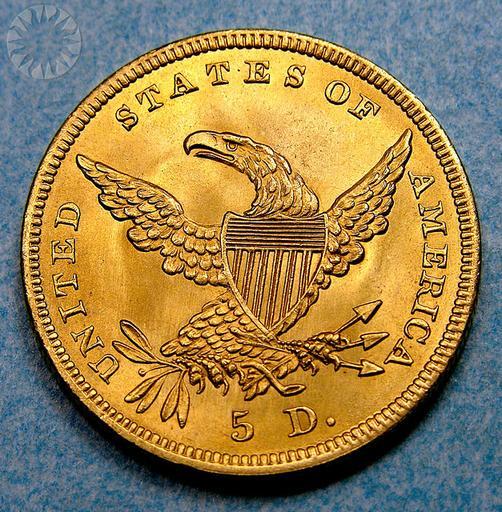MAKE A MEME
View Large Image

| View Original: | United_States,_5_Dollars,_1838.jpg (627x640) | |||
| Download: | Original | Medium | Small | Thumb |
| Courtesy of: | www.flickr.com | More Like This | ||
| Keywords: legendary coins legendarycoins numismatics money smithsonian probably public domain probablypublicdomain circle round ancient indoor plate earthenware ceramic SI Neg. 2005-27295. Date: 9/1/2005...This coin may be one of those minted from the bequest that James Smithson left to the United States for the creation of the Smithsonian Institution. James Smithson was born in 1765 as the illegitimate son of Sir Hugh Smithson, later known as Sir Hugh Percy, Baronet, 1st Duke of Northumberland, K.G., and Elizabeth Hungerford Keate. Elizabeth Keate had been married to James Macie, and so Smithson first bore the name of James Lewis Macie. .His mother later married Mark Dickinson, by whom she had another son. When she died in 1800, he and his half-brother inherited a sizable estate. He changed his name at this time from "Macie" to "Smithson." .James Smithson died June 27, 1829, in Genoa, Italy. His will left his fortune to his nephew, son of his half-brother, but stipulated that if that nephew died without children (legitimate or illegitimate), the money should go "to the United States of America, to found at Washington, under the name of the Smithsonian Institution, an establishment for the increase and diffusion of knowledge among men." The nephew, Henry Hungerford Dickinson, died without heirs in 1835, and Smithson's bequest was accepted in 1836 by the United States Congress. .James Smithson never visited the United States, and the reason for his generous bequest is unknown. The gift was the foundation grant for the Smithsonian Institution. The British gold coins in Smithson's bequest were quickly carried to the Philadelphia Mint, where they were melted down and recycled into American gold coins. .Most of the new coins were half eagles or five-dollar pieces. On the obverse, they have a left-facing Liberty head, her hair bound with a ribbon; on the reverse is a simple, unexceptional eagle with denomination. .The original design was the product of a German immigrant named John Reich, substantially altered by a second artist named William Kneass, tweaked again by another German immigrant, Christian Gobrecht. James Smithson's gold, now recycled into new, Americ.Click here to view the reverse...Credit: Tom Mulvaney (Smithsonian Institution) SI Neg. 2005-27295. Date: 9/1/2005...This coin may be one of those minted from the bequest that James Smithson left to the United States for the creation of the Smithsonian Institution. James Smithson was born in 1765 as the illegitimate son of Sir Hugh Smithson, later known as Sir Hugh Percy, Baronet, 1st Duke of Northumberland, K.G., and Elizabeth Hungerford Keate. Elizabeth Keate had been married to James Macie, and so Smithson first bore the name of James Lewis Macie. .His mother later married Mark Dickinson, by whom she had another son. When she died in 1800, he and his half-brother inherited a sizable estate. He changed his name at this time from "Macie" to "Smithson." .James Smithson died June 27, 1829, in Genoa, Italy. His will left his fortune to his nephew, son of his half-brother, but stipulated that if that nephew died without children (legitimate or illegitimate), the money should go "to the United States of America, to found at Washington, under the name of the Smithsonian Institution, an establishment for the increase and diffusion of knowledge among men." The nephew, Henry Hungerford Dickinson, died without heirs in 1835, and Smithson's bequest was accepted in 1836 by the United States Congress. .James Smithson never visited the United States, and the reason for his generous bequest is unknown. The gift was the foundation grant for the Smithsonian Institution. The British gold coins in Smithson's bequest were quickly carried to the Philadelphia Mint, where they were melted down and recycled into American gold coins. .Most of the new coins were half eagles or five-dollar pieces. On the obverse, they have a left-facing Liberty head, her hair bound with a ribbon; on the reverse is a simple, unexceptional eagle with denomination. .The original design was the product of a German immigrant named John Reich, substantially altered by a second artist named William Kneass, tweaked again by another German immigrant, Christian Gobrecht. James Smithson's gold, now recycled into new, Americ.Click here to view the reverse...Credit: Tom Mulvaney (Smithsonian Institution) | ||||